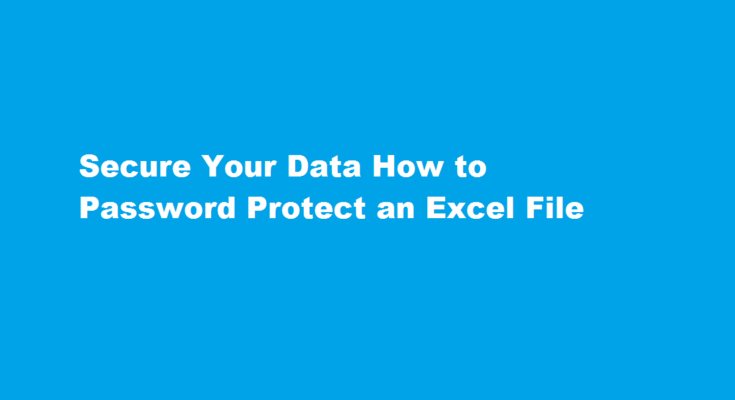Introduction
In today’s digital age, protecting sensitive information is paramount. One effective way to safeguard your data is by password-protecting your Excel files. This article will guide you through the steps to secure your Excel files and provide valuable tips for enhancing their security.
Understanding the Importance of Password Protection
Excel files often contain critical information, such as financial data, personal records, or proprietary business information. By applying password protection, you prevent unauthorized access and maintain the confidentiality and integrity of your data. Additionally, password protection can prevent accidental modification or deletion of vital information, providing an extra layer of security.
Step-by-Step Guide Password Protecting an Excel File
- Open the Excel file you want to protect.
- Click on the “File” tab in the top-left corner of the Excel window.
- From the dropdown menu, select “Protect Workbook” and then click on “Encrypt with Password.”
- Enter a strong and unique password in the dialog box. Ensure your password includes a combination of uppercase and lowercase letters, numbers, and special characters. Avoid using common words or easily guessable information.
- Confirm the password by retyping it and click “OK.”
- Save the file to apply the password protection.
Enhancing Password Protection
While setting a password is a crucial step, there are additional measures you can take to enhance the security of your Excel files
- Use a complex password Ensure your password is long and unique, avoiding easily guessable information like birthdays or common words. Consider using a password manager to generate and store strong passwords securely.
- Regularly update passwords Change your passwords periodically to minimize the risk of unauthorized access. It is advisable to change passwords at least every three to six months.
- Share files securely If you need to share password-protected Excel files, use secure file transfer methods, such as encrypted email or cloud-based file sharing platforms. Never share the password directly in the same communication.
- Protect against brute-force attacks Enable the “Iterative Calculation” option in Excel to slow down automated password-cracking tools. This feature increases the time it takes for each attempt, making it more difficult for attackers to decipher the password.
- Store files in a secure location Save your password-protected Excel files in a secure folder or encrypted storage. This adds an extra layer of protection against unauthorized access.
FREQUENTLY ASKED QUESTIONS
How do you password protect an Excel File but allow read-only?
Open the workbook that you want to protect. On the Review tab, under Protection, click Passwords. In the File Passwords dialog box, select the Read-only recommended check box, and click OK.
What are the two options for passwords to protect an Excel workbook?
You have two options with this type of protection – locking it down with a password and making the file Read-Only for certain specified groups. To protect your workbook at the file level, go to File > Info. Choose Protect Workbook and select Encrypt with Password.
Conclusion
Password protecting your Excel files is a vital step in safeguarding your sensitive data. By following the step-by-step guide and implementing additional security measures, you can significantly enhance the confidentiality and integrity of your Excel files, providing peace of mind in an increasingly digital world.
Read Also : A Comprehensive Guide on How to Apply for a Passport



